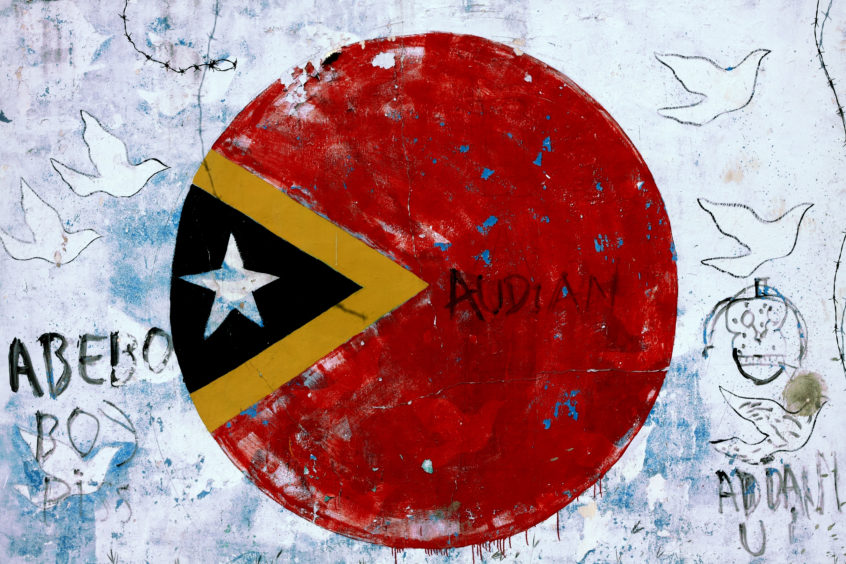
Australia’s Santos today announced that it has signed a memorandum of understanding (MoU) with East Timor’s regulator ANPM to progress a carbon capture and storage (CCS) project, estimated to cost $1.6 billion, at the ageing Bayu Undan field in the Timor Sea. But low returns and high complexity threaten the viability of the proposed scheme.
“The MoU details the areas the Bayu-Undan Joint Venture and the ANPM, with the support of the Timor-Leste Government, will work on collaboratively to test the viability of repurposing the existing Bayu-Undan facilities and using the Bayu-Undan reservoir for CCS. These include sharing technical, operational and commercial information, assessing the regulatory framework, evaluating local capacity opportunities and establishing a decision timeline,” Santos said in a statement today.
Significantly, Santos needs to offset carbon emissions from its Barossa project, which was recently sanctioned. The offshore Barossa gas field development off Australia’s Northern Territory has the unfriendly tag of having more carbon dioxide than any gas currently made into liquefied natural gas (LNG), according to a report from the Institute for Energy Economics and Financial Analysis (IEEFA).
“It feels more like a public relations, feel good move, to me, rather than a genuine project,” Bruce Robertson, an Australian-based analyst at IEEFA told Energy Voice earlier this year.
Robertson said there were several barriers to the CCS project offshore East Timor, also known as Timor Leste, proceeding. Including, firstly, a long and expensive pipeline will need to be built to ship the carbon dioxide (CO2) from Barossa or the LNG facility in Darwin, northern Australia, to Bayu Undan. Secondly, Bayu Undan is not in Australian waters, meaning Santos will produce CO2 in Australia, but bury it under East Timor’s seabed, with the aim of generating Australian carbon credits. This will require a unique regulatory solution.
Indeed, according to a recent internal document from Santos seen by Boiling Cold, Santos’ plan to bury CO2 and delay decommissioning at the Bayu-Undan gas project is challenged by low returns and will require numerous deals with governments and various partners to succeed, reported Boiling Cold.
Analysis from IEEFA suggests LNG from Barossa will generate much more emissions than any other Australian LNG project. Therefore, Santos plans to store CO2 from Barossa at the soon-to-be depleted Bayu Undan field. This simultaneously helps offset emissions and delays a massive $1.1 billion decommissioning bill in East Timor by decades, said Boiling Cold.
According to the internal document, the CCS project is estimated to cost $1.6 billion, but there are numerous technical and economic challenges to overcome.
As noted by Boiling Cold, the East Timor government could prove to be the biggest hurdle. “It will want revenue from CCS and assurance there will be money available mid-century when the delayed decommissioning of Bayu Undan occurs.”
Santos has also called on the Australian government to provide low-cost financing for CCS projects.
Moreover, Santos internal analysis signalled that storing 2.3 million tonnes of CO2 per year from the Barossa reservoir resulted in an excessive cost per tonne. Santos said today that CCS at Bayu Undan has potential capacity to store 10 million tonnes per year of CO2.
The CCS project would need additional income from storing four million tonnes of CO2 per year from Inpex’s Ichthys LNG project that has its liquefaction facilities near Santos’ Darwin LNG plant. But Inpex prefers a different storage site and is progressing CCS at a slower pace than Santos, said Boiling Cold.
Notably, Santos’ chief executive, Kevin Gallagher, told analysts last month that there is a “bit of water to go under the bridge” before CCS at Bayu Undan becomes a possibility. That appears to be an understatement.
But Santos is eager to hit its net-zero emissions target by 2040 and kick its decommissioning liabilities at Bayu Undan down the road by a couple of decades. As a result, it seems likely Santos will keep doggedly pursuing the proposed CCS scheme, despite the low returns and high complexity indicated by the internal analysis leaked to Boiling Cold.
Still, East Timor seems interested to explore the opportunity.
ANPM president Florentino Soares Ferreira said “this is a milestone for Timor-Leste. With the signing of the CCS MoU between Santos (representing its Joint Venture partners) and ANPM proves that Timor-Leste is proactively taking the lead in integrating its oil and gas sector towards Timor-Leste’s commitment of accelerating decarbonisation and meeting the UN net zero target by 2050.”
“Despite Timor-Leste being one of the lowest emission countries in the world, and that the Paris Agreement provides waiver or concession to the developing and less developed nations such as Timor-Leste; we understand that carbon trading or carbon credits market is an integral part of our future economy. We don’t want to miss this opportunity; and I believe this will become one of the largest CCS projects in the Southern Hemisphere. This will enable both Timor-Leste and Australia to exploit its untapped resources in meeting energy demands as well as offsetting its carbon emissions and transitioning towards carbon neutral economies.”
Santos has a 43.4% operated interest in Bayu-Undan. The remaining interest is held by SK E&S (25%), Inpex (11.4%), Eni (11%) and Tokyo Timor Sea Resources (9.2%).
